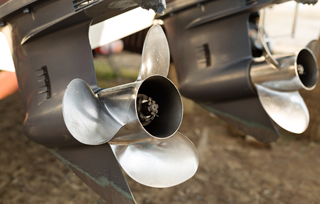
If your engine can’t get to within 100 to 200 rpm of rated wide-open throttle (WOT), you probably have a prop issue, assuming your engine runs fine and minimal growth on the hull. Most props can have the pitch adjusted at a prop shop, which can save you from having to buy a new one. A general rule of thumb is that a 1-inch pitch change will result in a 175 to 225 rpm change at WOT.
Does Your Engine Over-Rev While The Boat Seems Slow?
If your prop has too little pitch, the engine can rev past its red line, which is like driving your car on the interstate in second gear. Continuous running over WOT will soon damage an engine. A prop shop can add more pitch or recommend a new prop. Notice that having either too little or too much pitch can cause engine damage. So why didn’t your boat come with the right prop in the first place?
It's possible it did, but the prop could have been changed later. Also, a boatbuilder doesn't know how or where you will be using your boat, so he or she often uses a compromise prop. Running your boat at high-altitude lakes, for example, requires a different prop than one that will be used at sea level. A boat used to pull skiers or one that is loaded down with weekend gear will require a different prop than a boat used for zooming a couple of fishermen out to a fishing spot.
Which material is best for a prop? A lot depends on where you do your boating. If your chances of hitting a submerged object are low, an aluminum prop is an all-around inexpensive choice. Aluminum props come standard from most boat and engine manufacturers, but they're less rugged than stainless-steel props. The latter are less likely to be damaged but are more expensive to repair.